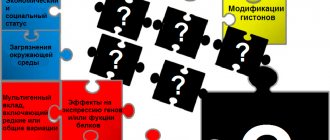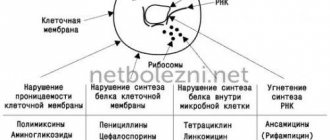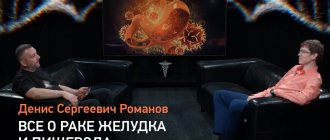Autism: diagnosis or?
In ICD-10, the classifier of diseases valid until 2022, which doctors rely on when filling out cards, there is no disease with this name.
More precisely, in the subclass “General disorders of psychological development” there is childhood autism and atypical autism. These are two different diseases. Childhood autism manifests itself before age 3 and is manifested by:
- developmental delays or abnormalities,
- disorders of social interaction in general and communication in particular,
- stereotypical or monotonous behavior.
These are the main features of the disease. They may be accompanied by self-aggression, selectivity in food, sleep disorders, phobias - but they are accompanied. By themselves, these signs can mean anything, but without a triad of main signs, a diagnosis of early childhood autism (ECA) cannot be made.
Atypical autism is a completely different disease. It develops after 3 years and is manifested primarily by mental retardation, which can be either mild or severe. The triad characteristic of childhood autism is absent here, or one or two signs are expressed, and the rest may not be observed or may be erased. This condition is most accurately described by a synonymous term from ICD-10: mental retardation with features of autism. That is, mental disorders are primary, which are accompanied by certain features characteristic of childhood autism.
Theory of mind model
The term "theory of mind" does not describe this model very well, but it is often used. Some experts believe that understanding theory of mind is one of the most important facts that anyone who works with people with autism needs to know.
Theory of mind is the innate ability to predict/imagine/understand what other people might be thinking, or what a situation looks like from another person's point of view. For example, having written the previous sentence, the author might think that it is not very clear, and readers may not understand what exactly is meant, perhaps another sentence is needed to clarify it. This is a model of mind - the ability to imagine that people reading this sentence do not know the same thing as the author about theory of mind. Another example is if you are about to comment on someone's behavior and you think your comment might upset the other person, then you are using theory of mind.
However, people with autism often have difficulty understanding what other people are thinking, feeling or knowing. As Emmett puts it: “What if I don’t know that your experience is different from mine? What if a sound DOES bother me, but I'm sure it bothers everyone equally, so I just have to grit my teeth and bear it? What if today my leg hurts a lot when I walk, but I don’t realize that you can’t know about it?”
When people are unable to predict/understand that other people think about the same situation differently than themselves, then they are “not based on theory of mind.”
British researcher Simon Baron-Cohen has written extensively about this aspect of autism. In articles following the original Camberwell study, Wing and Gould replaced "interest in stereotypical or repetitive behavior" with "lack of social imagination" (essentially their version of theory of mind) as one of the autism triads. (And this is also not the first mention of theory of mind; it is much older).
Like autism itself, theory of mind is a continuum, so it cannot be said to be either present or completely absent. People with autism often understand that others think differently than they do, but they may still have a harder time understanding what other people think.
Theory of mind explains a feature of autism that the other models mentioned here cannot explain. However, it is by no means a complete model of autism—it does not explain many other symptoms of autism and does not reveal anything about its cause.
Autistic traits - doctor, is there a cure?
This is the name for behavioral features that are often found in people with early childhood autism. This:
- monotonous obsessive movements (stims);
- excessive reaction to ordinary stimuli;
- poor communication - the child does not respond to speech addressed to him, does not respond to his name, and constantly, and not just when he is passionate about something;
- significant delay in speech development;
- lack of formation of the pointing gesture, gestures of agreement and denial;
- echolalia - repetition of heard phrases;
- vocalization: long chanting of vowels, sudden screams;
- lack of imitation of actions;
- categorical refusal of certain products;
- lack of role-playing play at the age of about 3 years;
- clumsiness, lack of coordination of movements.
Autistic traits by themselves do not mean anything. Almost every child can have at least one of them. The presence of 3 or more traits from this list should alert parents. In this case, you need to consult a doctor - to start with a speech/behavioral neurologist, who will draw up a plan for medical and pedagogical correction. The fact is that a complex of autistic traits can indicate both autism - childhood or atypical, and autism spectrum disorders, and in addition - about conditions that do not even remotely resemble any of the autisms and are hidden in the ICD under the code “Other general disorders” development".
Speech, intelligence, worldview
Children with autism have impaired perception of the overall picture of the world. They analyze the object not as a whole, but divide it into details. They are interested in the car not as a form of transport, but only because its wheel moves.
Such children are not characterized by the desire to understand the world, study the properties of an object, its purpose. They choose attractive elements for themselves and follow them. Cognitive questions “why, why” lag in time.
Autistic children have a hard time getting interested in toys, but they focus on sensory stimuli. For example, a baby loves classical music so much that already at one year old he finds the right record in a stack and puts it in the player.
However, what is amazing is the ability of such children to remember what they, looking from the outside, do not pay attention to, hear what they do not listen to, see what they do not look closely at. When it is subsequently possible to establish verbal contact with them, the children talk about many things that, as it seemed, did not interest them.
As for memory, it can be said to be selective. They remember very well what is significant to them: the situation in the apartment, habits in the family, etc. Therefore, any violation of the routine causes indignation in them. Children are also good at remembering events that made them feel afraid.
A special feature of little autistic children is mechanical memory. They perfectly remember poetry, reproduce complex drawings and songs.
The speech of autistic children also has its own characteristics. In infancy, they are not characterized by humming and babbling. They appear very late. The first words are spoken on time, but these are not the usual “mother”, but completely different words that are not used for direct communication.
Many children's speech is either very poor, with a small vocabulary, or practically not developed at all. They hum, smack, and speak their own language. The words are incoherent and may use expressions taken from the cartoons they have watched.
Echolalia is observed - repetition of words addressed to the autistic person. Sometimes very complex expressions are repeated, but purely automatically, without understanding the meaning. There is a reversal of pronouns; when a child with ASD is asked what your name is, he answers: “Your name is Petya.”
The meaning of the speech of an autistic child is understandable only to close people, since he operates with abstract concepts. For example, when mom is angry, she answers her: “Have mercy, madam.”
Even if the baby’s speech is quite well developed, and his vocabulary is very rich, he is still incapable of dialogue. He speaks only about what interests him, in the form of a monologue, while the intonation of his statements suffers.
Autistic people easily learn foreign languages. But, as teachers note, they also master their native language as a foreign one.
In general, speech with RDA is also stereotypical. It is often incomprehensible to others, as it expresses the personal interests of its bearer. Spontaneous speech used in communication is poorly developed; children better perceive indirect speech addressed to others. They can speak clearly and without hesitation, using complex expressions, in the form of a monologue or echolalia, but they stumble, get confused and speak blurredly when trying to start a dialogue.
Vague concept
There is simply no concept of “autism spectrum disorder” in ICD-10. There is Asperger's syndrome, or autistic psychopathy, Rett syndrome, childhood dementia (also known as disintegrative psychosis) and other similar diseases with or without mental retardation. But in the DSM-5, the American Diagnostic and Statistical Manual of Mental Disorders, there is a concept of ASD. It unites all diseases that ICD-10 classifies as general disorders of psychological development.
The main diagnostic criterion for ASD is the classic triad characteristic of childhood autism. But this is where the confusion lies: in some diseases included in the concept of ASD, these signs are not always fully manifested.
ICD-11 will come into force in 2022. In the new edition, autism spectrum disorders are a category in the subsection “Mental and behavioral disorders.” They are divided into 6 subcategories, but not according to specific diseases. Functional language (without impairment, with impairment, absent) and intellectual development (without or with impairment) are taken into account. The main issue has also been resolved in ICD-11: autism and ASD are one and the same thing, at least as of 2022.
Mental retardation
This pathology is otherwise called oligophrenia or intellectual disability. Here everything is much worse, since almost nothing can be fixed. Disturbances in the development of the brain and central nervous system lead to a stop in the improvement of the child’s intelligence. He is unable to think abstractly, his cognitive functions are impaired, his emotions are simple and poor.
A mentally retarded child speaks and walks slowly, as he has a special vegetative state. His memory is limited, his ability to learn and acquire skills is lower than average, and he often cannot take care of himself normally. Such a baby easily becomes attached to people who treat him well. He does not withdraw into himself and easily, with pleasure, makes contact.
Like autistic children, children with this disorder also love music.
This pathology is congenital or manifests itself in a child under three years of age. It should be noted, however, that if it is mild, the diagnosis can be made after completing a primary school course.
Important: oligophrenia cannot progress.
The “culprits” of intellectual incapacity are well defined:
- smoking and drinking alcohol by the expectant mother during pregnancy;
- exposure to toxins on the fetus;
- hypoxia during childbirth;
- Klinefelter's, Down's syndromes, etc.
Escape from the verbal jungle
Terminological disputes are a consequence of poor knowledge of the causes of diseases that manifest themselves in the triad characteristic of RDA. This is directly reflected in the classifications, because their final form depends on what principle the compilers used as the basis for dividing diseases into groups and subgroups. Despite the fact that ICD-11 clearly suggests that autism and ASD should be considered one and the same, in practice, in order to select diagnostic, treatment and correction algorithms, it is not always enough to assess only the level of intelligence and speech development, because these symptoms are only an indicator of the functional maturity of the brain. But classifiers do not remain unchanged. If the medical community decides that the new classification is not good enough, changes may be made.
For patients and their parents, it is not so much the name of the condition that is important, but rather early diagnosis, a comprehensive assessment of the child’s health, and selection of the most effective therapy and rehabilitation activities. There are no universal schemes for diseases in which the triad characteristic of childhood autism manifests itself; only an individual approach and active joint work of doctors, teachers and parents help. Perhaps the compilers of ICD-11 are right: in early diagnosis it is difficult to unambiguously differentiate various conditions that resemble RDA. It is almost impossible to provide assistance without an established diagnosis within the framework of evidence-based medicine, and the earlier the child begins to receive therapy, the better the prognosis.








